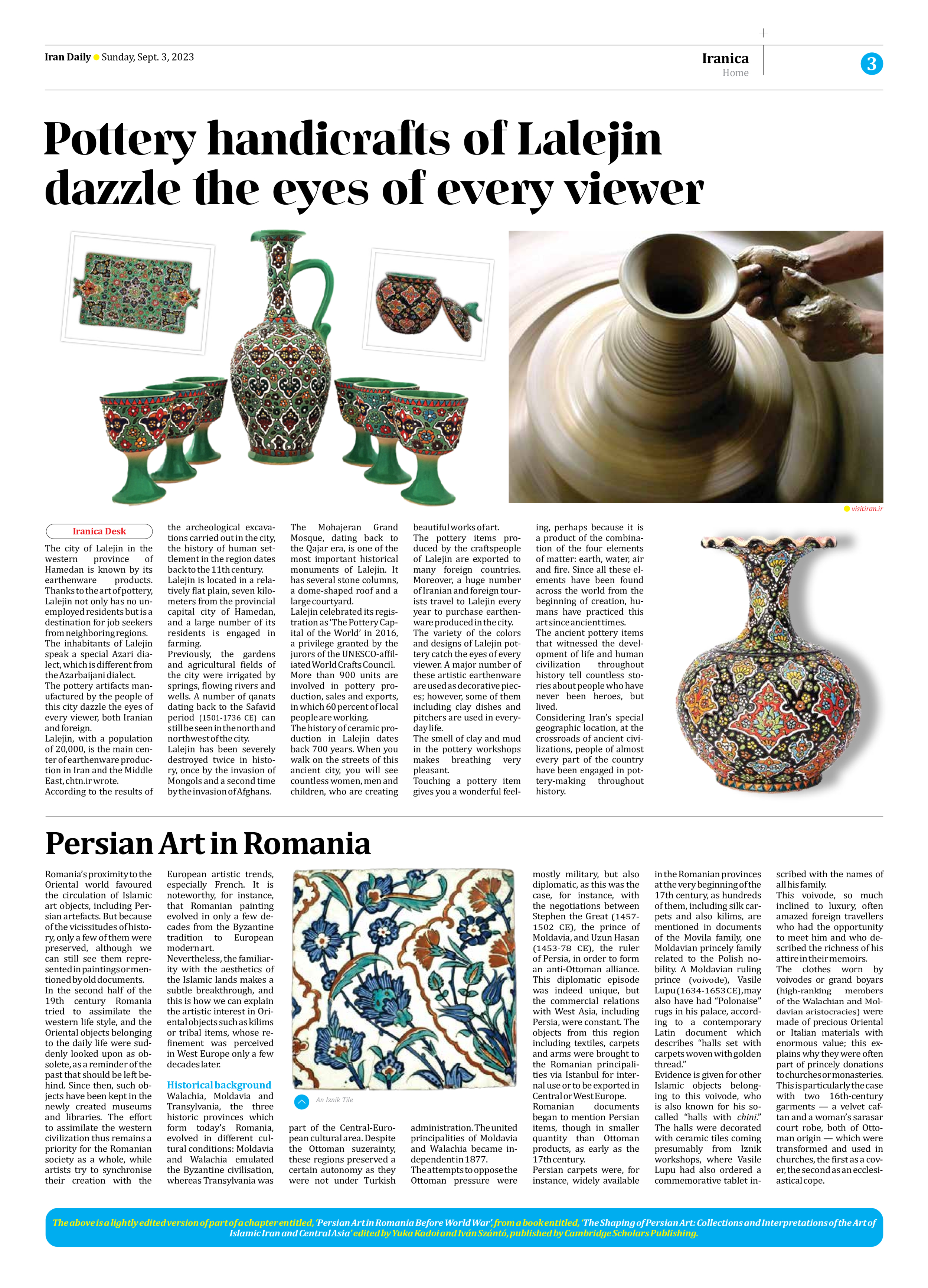
Pottery handicrafts of Lalejin dazzle the eyes of every viewer
The city of Lalejin in the western province of Hamedan is known by its earthenware products. Thanks to the art of pottery, Lalejin not only has no unemployed residents but is a destination for job seekers from neighboring regions.
The inhabitants of Lalejin speak a special Azari dialect, which is different from the Azarbaijani dialect.
The pottery artifacts manufactured by the people of this city dazzle the eyes of every viewer, both Iranian and foreign.
Lalejin, with a population of 20,000, is the main center of earthenware production in Iran and the Middle East, chtn.ir wrote.
According to the results of the archeological excavations carried out in the city, the history of human settlement in the region dates back to the 11th century.
Lalejin is located in a relatively flat plain, seven kilometers from the provincial capital city of Hamedan, and a large number of its residents is engaged in farming.
Previously, the gardens and agricultural fields of the city were irrigated by springs, flowing rivers and wells. A number of qanats dating back to the Safavid period (1501-1736 CE) can still be seen in the north and northwest of the city.
Lalejin has been severely destroyed twice in history, once by the invasion of Mongols and a second time by the invasion of Afghans.
The Mohajeran Grand Mosque, dating back to the Qajar era, is one of the most important historical monuments of Lalejin. It has several stone columns, a dome-shaped roof and a large courtyard.
Lalejin celebrated its registration as ‘The Pottery Capital of the World’ in 2016, a privilege granted by the jurors of the UNESCO-affiliated World Crafts Council.
More than 900 units are involved in pottery production, sales and exports, in which 60 percent of local people are working.
The history of ceramic production in Lalejin dates back 700 years. When you walk on the streets of this ancient city, you will see countless women, men and children, who are creating beautiful works of art.
The pottery items produced by the craftspeople of Lalejin are exported to many foreign countries. Moreover, a huge number of Iranian and foreign tourists travel to Lalejin every year to purchase earthenware produced in the city.
The variety of the colors and designs of Lalejin pottery catch the eyes of every viewer. A major number of these artistic earthenware are used as decorative pieces; however, some of them including clay dishes and pitchers are used in everyday life.
The smell of clay and mud in the pottery workshops makes breathing very pleasant.
Touching a pottery item gives you a wonderful feeling, perhaps because it is a product of the combination of the four elements of matter: earth, water, air and fire. Since all these elements have been found across the world from the beginning of creation, humans have practiced this art since ancient times.
The ancient pottery items that witnessed the development of life and human civilization throughout history tell countless stories about people who have never been heroes, but lived.
Considering Iran’s special geographic location, at the crossroads of ancient civilizations, people of almost every part of the country have been engaged in pottery-making throughout history.







